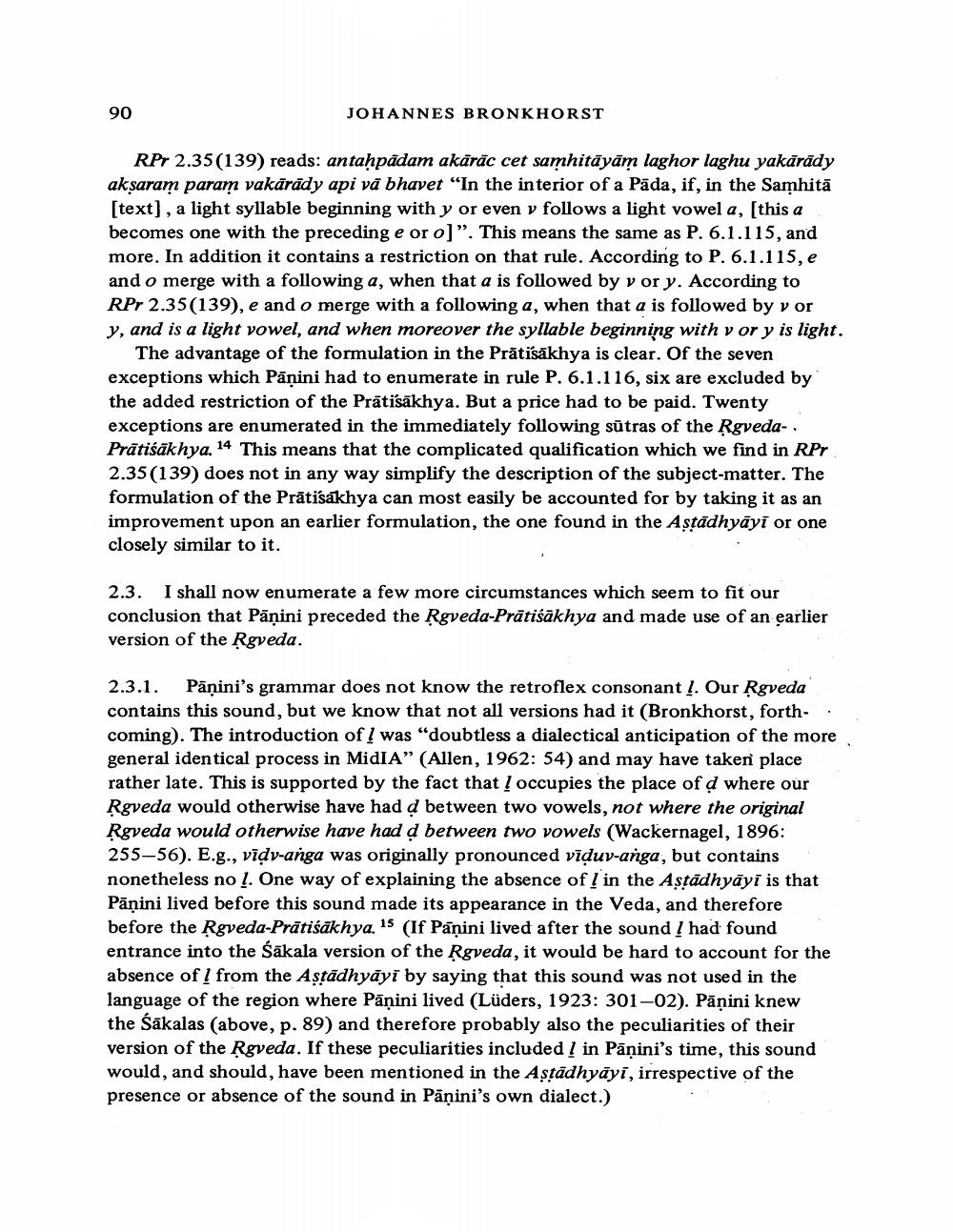________________
90
JOHANNES BRONKHORST
RPr 2.35(139) reads: antaḥpadam akarac cet samhitāyām laghor laghu yakarādy akṣaram param vakārādy api vā bhavet "In the interior of a Pada, if, in the Samhita [text], a light syllable beginning with y or even v follows a light vowel a, [this a becomes one with the preceding e or o]". This means the same as P. 6.1.115, and more. In addition it contains a restriction on that rule. According to P. 6.1.115, e and o merge with a following a, when that a is followed by v or y. According to RPr 2.35(139), e and o merge with a following a, when that a is followed by v or y, and is a light vowel, and when moreover the syllable beginning with v or y is light.
The advantage of the formulation in the Prātisakhya is clear. Of the seven exceptions which Panini had to enumerate in rule P. 6.1.116, six are excluded by the added restriction of the Prätisakhya. But a price had to be paid. Twenty exceptions are enumerated in the immediately following sutras of the Rgveda-. 14 Prätisakhya. This means that the complicated qualification which we find in RPr 2.35(139) does not in any way simplify the description of the subject-matter. The formulation of the Prātisakhya can most easily be accounted for by taking it as an improvement upon an earlier formulation, the one found in the Aṣṭadhyayi or one closely similar to it.
2.3. I shall now enumerate a few more circumstances which seem to fit our conclusion that Panini preceded the Rgveda-Prātiśākhya and made use of an earlier version of the Rgveda.
2.3.1. Pāṇini's grammar does not know the retroflex consonant !. Our Ṛgveda contains this sound, but we know that not all versions had it (Bronkhorst, forthcoming). The introduction of was "doubtless a dialectical anticipation of the more general identical process in MidIA" (Allen, 1962: 54) and may have taken place rather late. This is supported by the fact that / occupies the place of d where our Rgveda would otherwise have had d between two vowels, not where the original Rgveda would otherwise have had d between two vowels (Wackernagel, 1896: 255-56). E.g., vidv-anga was originally pronounced viduv-anga, but contains nonetheless no 1. One way of explaining the absence of in the Aṣṭadhyay is that Pānini lived before this sound made its appearance in the Veda, and therefore before the Rgveda-Prätiśäkhya 15 (If Panini lived after the sound / had found entrance into the Sakala version of the Ṛgveda, it would be hard to account for the absence of from the Aṣṭadhyayi by saying that this sound was not used in the language of the region where Panini lived (Lüders, 1923: 301-02). Panini knew the Sakalas (above, p. 89) and therefore probably also the peculiarities of their version of the Rgveda. If these peculiarities included in Panini's time, this sound would, and should, have been mentioned in the Aṣṭadhyayi, irrespective of the presence or absence of the sound in Pāṇini's own dialect.)




